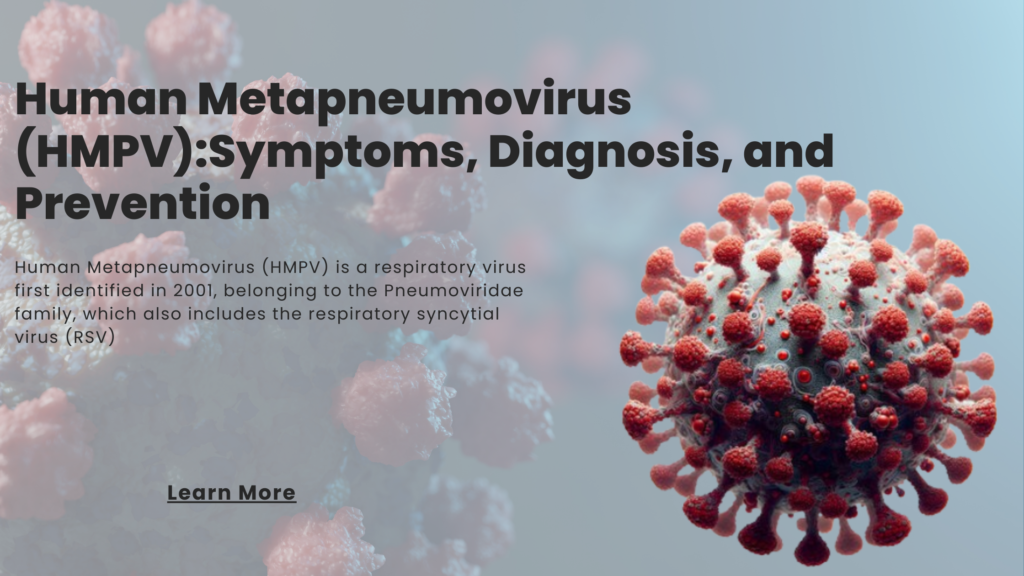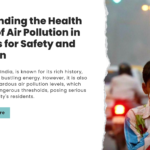
What is Human Metapneumovirus (HMPV)?
Human Metapneumovirus (HMPV) is a respiratory virus first identified in 2001, belonging to the Pneumoviridae family, which also includes the respiratory syncytial virus (RSV). This virus primarily affects the respiratory tract, causing a range of illnesses from mild colds to severe pneumonia.
HMPV is a global concern, with most individuals infected by the age of five. Although often mild, reinfections are common throughout life. Vulnerable groups include children under 5, adults over 65, and individuals with compromised immune systems.
Who is at Risk for HMPV?
While HMPV can infect people of all ages, certain groups are at a higher risk of developing severe symptoms, such as:
- Infants and young children under 5 years old
- Older adults over 65 years
- Immunocompromised individuals, including:
- Cancer patients undergoing treatment
- Organ transplant recipients
- Individuals with HIV/AIDS
- People with chronic lung conditions like asthma or COPD
These groups should take extra precautions to reduce exposure to HMPV.
Recent Outbreaks in China
China has reported outbreaks of HMPV, particularly in its northern provinces. The virus has primarily affected children under 14, causing a surge in respiratory infections. Neighboring countries, such as Malaysia, and even nations like India, are implementing health measures to control its spread.
The global awareness of HMPV highlights the importance of preventive care and early diagnosis to mitigate its impact on public health.
What are the Symptoms of HMPV?
HMPV symptoms are similar to other respiratory viruses, such as influenza and RSV. The severity of symptoms varies depending on age and health status.
In Adults:
- Runny or stuffy nose
- Sore throat
- Cough
- Low-grade fever
- Headache
Severe cases, especially in older adults or those with weakened immunity, may include:
- High fever
- Wheezing
- Difficulty breathing
- Pneumonia
In Children: Young children are more susceptible to severe respiratory symptoms, such as:
- Cough and fever
- Runny nose
- Wheezing
- Vomiting
- Difficulty breathing
In extreme cases, children may develop bronchiolitis or pneumonia, necessitating immediate medical attention.
How is HMPV Transmitted?
HMPV spreads primarily through:
- Respiratory droplets when an infected person coughs or sneezes.
- Direct contact with an infected person.
- Contaminated surfaces: The virus can survive on surfaces for several hours.
It is most contagious during the initial days of infection when symptoms are at their peak.
How is Human Metapneumovirus Diagnosed?
HMPV diagnosis involves:
- Clinical evaluation: A doctor reviews your symptoms and medical history.
- Laboratory tests: Common tests include:
- RT-PCR (Reverse Transcription Polymerase Chain Reaction): Detects viral RNA.
- ELISA (Enzyme-Linked Immunosorbent Assay): Identifies antibodies or viral antigens.
- Nucleic Acid Amplification Tests (NAAT): Sensitive and reliable for HMPV detection.
- Immunofluorescence assays: Useful for identifying viral antigens.
Severe cases may require advanced testing, such as bronchoscopy, to collect lung fluid samples.
Complications Associated with HMPV
Though often mild, HMPV can lead to serious complications, especially in high-risk groups:
- Bronchiolitis
- Pneumonia
- Acute respiratory distress syndrome (ARDS)
- Secondary bacterial infections
- Exacerbation of pre-existing conditions (e.g., asthma or COPD)
Approximately 10–12% of respiratory illnesses in children are attributed to HMPV, with 5–16% resulting in lower respiratory infections.
How is Human Metapneumovirus Treated?
There is no specific cure for HMPV. Treatment focuses on symptom management:
- Over-the-counter medications: For fever and congestion.
- Inhalers or nebulizers: For wheezing or breathing difficulties.
- Steroids: May be prescribed in severe cases to reduce inflammation.
Consult your doctor for personalized medical advice, especially if you belong to a high-risk group.
Preventing HMPV
While no vaccine exists for HMPV, preventive measures include:
- Good hygiene practices: Wash hands frequently with soap for at least 20 seconds.
- Avoiding sick individuals: Maintain distance from those exhibiting symptoms.
- Disinfecting surfaces: Regularly clean high-touch areas.
- Staying home when unwell: Prevent spreading the virus to others.
Vaccinations for other respiratory illnesses, like the flu, can reduce the overall burden of infections.
How Long Does HMPV Last?
- Mild cases: Symptoms typically last 7–10 days.
- Severe cases: May persist for weeks, particularly in individuals with weakened immunity.
When to Seek Medical Attention
Visit a healthcare provider if:
- Symptoms worsen or last longer than a few days.
- Fever exceeds 103°F (40°C).
- Severe difficulty in breathing or cyanosis (bluish skin or lips) occurs.
Timely medical care can prevent serious complications.
Conclusion
Human Metapneumovirus (HMPV) is a significant cause of respiratory illnesses worldwide, particularly in vulnerable populations. By recognizing its symptoms, understanding its transmission, and practicing preventive measures, you can protect yourself and your loved ones.
If you suspect HMPV, consult a healthcare provider for diagnosis and treatment. Stay informed and prioritize your health to combat respiratory illnesses effectively.



